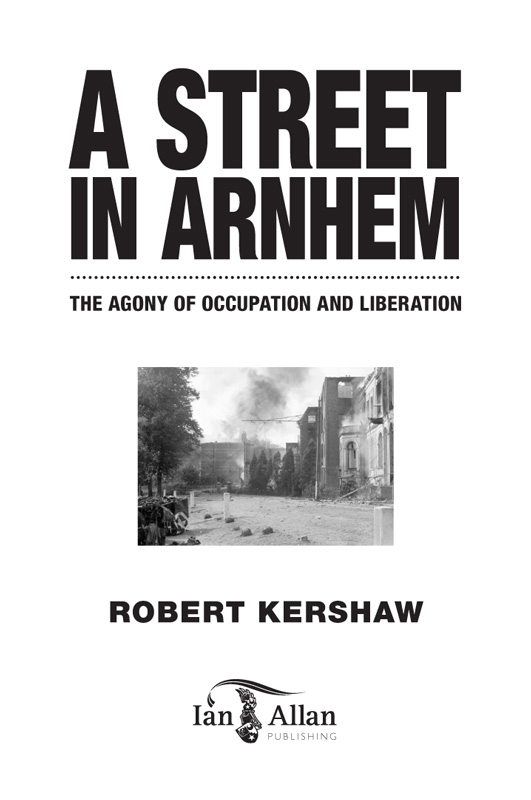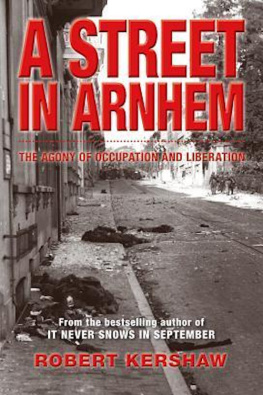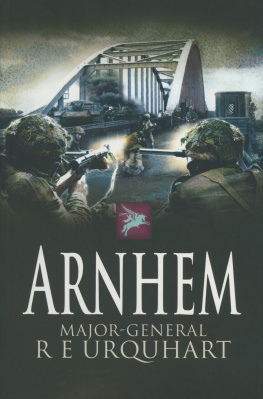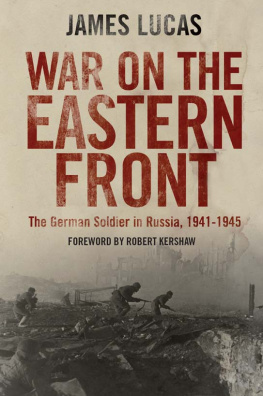
First published 2014
ISBN 978 0 7110 3754 0
All rights reserved. No part of this book may be reproduced or transmitted in any form or by any means, electronic or mechanical, including photocopying, recording, scanning or by any information storage and retrieval system, on the internet or elsewhere, without permission from the Publisher in writing.
Robert Kershaw 2014
Published by Ian Allan Publishing Ltd, Hersham, Surrey KT12 4RG.
Printed in England
Visit the Ian Allan Publishing website at www.ianallanpublishing.com
Copyright
Illegal copying and selling of publications deprives authors, publishers and booksellers of income, without which there would be no investment in new publications. Unauthorised versions of publications are also likely to be inferior in quality and contain incorrect information. You can help by reporting copyright infringements and acts of piracy to the Publisher or the UK Copyright Service.
Picture credits
Every effort has been made to identify and correctly attribute photographic credits. Should any error have occurred this is entirely unintentional. All uncredited photographs are from the authors collection.
FRONT COVER Kriegsberichter Jacobsen took these first pictures of the street outside No 63 Utrechtseweg early on the morning of 19 September. Two British paratroopers, Private Norman Shipley (in front) and Lance-Corporal William Loney (at rear), both with 2 Para, had been lying here for two days.
BACK COVER Glider Pilot Captain Foster Robson of F Squadron the Glider Pilot Regiment supported by his staff Sergeant Duffy Edwards hobbling past a German StuG III having been captured four days after landing, as the street was besieged.
TITLE PAGE The burning street.
ENDPAPERS Endpaper maps reproduced with their kind permission from Major & Mrs Holts Battle Map of Market-Garden.
See http://www.guide-books.co.uk/arnhem-market-garden.html for details.
Acknowledgements and thanks
My particular thanks go to Robert Voskuil who accessed a lot of information from the very helpful staff of the Oosterbeek Airborne Museum and from his own sources and memory. He has in addition provided photographs and valuable local advice throughout the writing and gestation period of this book. My thanks also to Robert Sigmond, Chris van Roekel, Wil Rieken, Berend Esvelt, Harry van Gorkum, Geert Maassen and many other Dutch colleagues, who all stepped up to the mark in terms of information, interviews, photographs and remarkable stories. Colonel John Waddy (retired), ex-156 Para, was particularly helpful in tracking down very many unusual accounts and introducing me to many of the Dutch contacts mentioned above.
Pre-war Arnhem street plans label the road running from Oosterbeek to Arnhem as the Utrechtsche Straatweg only the last section running from Oosterbeek to Arnhem Station is called Utrechtseweg. In the interests of narrative simplicity the modern road name, Utrechtseweg, is used when referring to the Street.
Post-war reconstruction has produced many different house numbers, so present-day address numbers are used, even though this is not always practical. Reconciling differences between 1944 and today was challenging, so my apologies for any inevitable errors that may occur. Tracking changes has been like trying to hit a moving target, with new houses being built every year. The changes would, I suggest, tax even a Dutch official, but with the aid of personal enquiries and access to a copy of the pre-war Oosterbeek telephone directory and address book, a reasonable stab at accuracy has been achieved. For example, Wil Riekens wartime address of 160 Utrechtsche Straatweg is the converted fashion shop that can be found at the same location at No 178 Utrechtseweg today.
Every reasonable effort has been made to contact copyright holders, but if there are any errors or omissions, the publishers will be pleased to insert the appropriate acknowledgement in any subsequent printing of this publication.
General published sources
Army Bureau of Current Affairs Arnhem 2: Inside The Perimeter, No 84, Dec 1944
Bauer, C. The Battle of Arnhem (Zebra, 1979)
BBC War Report: D-Day to VE Day (Ariel Books, 1985)
Cholewczynski, G. F. Poles Apart (Sarpedon, 1993) Spanhoes September (Walka Books, 2008)
Duyts, W. and Groeneweg, A. The Harvest of Ten Years (Oosterbeek Airborne Museum, 1988)
Eastwood, S., Gray, C. and Green, A. When Dragons Flew (Silver Link, 1994, 2009)
Fairley, J. Remember Arnhem (Pegasus Journal, 1978)
Frbringer, H. 9.SS-Panzer Division. Hohenstaufen 1944 (Heimdal, 1984)
Gerritsen, S. (ed) Geschichten, die Bleiben (NL Bevrijdingsmuseum, 1944-45)
Gijbels, P. and Truesdale, D. Leading the Way to Arnhem (RN Sigmond, 2008)
Hees, A-J. van Green On! (Private Pub, 2007)
Junier, A., Smulders, B. and Korsloot, J. By Land, Sea and Air (RN Sigmond, 2003)
Kershaw. R. J. It Never Snows in September (Ian Allan Publishing Ltd, 1994) Skymen (Hodder & Stoughton, 2010)
McKee, A. The Race for the Rhine Bridges (Stein & Day, 1971)
Maassen, G. Oosterbeek Verwoest 1944-45 (Private Pub, 1980)
Margry, K. Operation Market-Garden: Then and Now, 2 Vols (After The Battle, 2002)
Middlebrook, M. Arnhem 1944 (Viking, 1994)
OReilly From Delhi to Arnhem (Thoroton, 2009)
Pijpers, G. and Truesdale, D. Arnhem Their Final Battle (RN Sigmond, 2012)
Ryan, C. A Bridge Too Far (Hamish Hamilton, 1974)
Sigmond, R. Off at Last (RN Sigmond, 2009)
Teesling, P. A. van (ed) Over and Over (Kontrast Oosterbeek, 2000)
Waddy J. A Tour of the Arnhem Battlefields (Leo Cooper, 1999)
Wilkinson, P. The Gunners at Arnhem (Spurwing Pub, 1999)
Zee, H. van der The Hunger Winter (Jill Norman & Hobhouse Ltd, 1982)
Periodicals
Note Oosterbeek Museum Mini-History publications are denoted MH with the number.
Baker, E. B. Bunny Bakers Arnhem Story (Eagle Magazine, Vol 9, No 10, Dec 2001)
Heijbroek, N. Three Englishmen in Our Cellar (MH No 66, May 2000)
Hofwegen, J. A. van September 1944: A Month We Will Never Forget (Eagle Magazine, Vol 9, No 8, Apr 2001)
Hol, J., Memories of Oosterbeek (MH No 52, Nov 1996)
Jong, A. de War Evacuees in the Open Air Museum (NL Open Air Museum, Arnhem, 2004)
Kessler, H. Kmpfe im Raum Arnheim (Die Weissen Spiegel, 2/85, 5/85 and 6/85)
Maassen, G. H. Anxious Days at Dreijen (MH No XXXV) Daily Reports from the Municipal Police of Oosterbeek (Sep 17-20 1944, MH No XIII)
Meijer, C. War in the Weverstraat (MH No XXV)
Roekel, C. van Sturmgeschtz-Brigade 280 (MH No 70, May 2001)
Tiemens, W. H. The Only Female Prisoner of War in Arnhem (MH No 39, Aug 1993)
Timmerman, H. German Field Graves in Oosterbeek (MH No 84, Dec 2004)
Veelen, H. van Civilian Aid in the Schoonoord (MH No 64, Oct 1999)
Voskuil, R. The Wartime Adventures of an Arnhem Schoolboy (Kees Bolderman, MH No 75, Aug 2002)
Between Bombs and Gliders (MH No XXVI)
Zanten, Willy van The Arnhem Diary of a Dutch Schoolboy (Pegasus Magazine, Summer 2008)
Zonnenfeld, J. W. van Volunteers Needed (MH No 79, Aug 2003)
Published memoirs and personal accounts
Bankhead, H.
Next page










